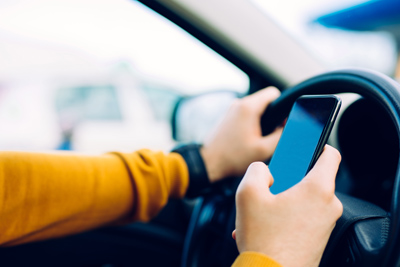Consumers fear drivers are faster, more aggressive and more reckless compared to 2022. They are right. New research from Nationwide shows dangerous driving behavior has not improved since last year. In fact, it has reached alarming highs.
The Younger the Driver, the Scarier the Driving Behaviors
Nationwide's Agency Forward research found Gen Z has especially developed unsafe driving habits. 59% of Gen Z drivers admit being more impatient on the road than they were a year ago, and 47% report driving faster and taking phone calls on a handheld device. During the past year:
- 38% of Gen Z consumers admitted to looking at their phone more frequently while behind the wheel.
- 34% of Gen Z drivers video chatted while driving.
- 24% of Gen Z and 23% of Millennials used/checked social media while driving.
Americans Overrate their Driving Behavior
Just like in 2022, drivers think highly of their driving skills. 86% of consumers rate their own driving behavior as excellent or very good, while only 23% would say the same of other drivers on the road.
Many Drivers Speed and Multitask Behind the Wheel
Speeding remains an issue, with 54% of Americans admitting they've driven 10+ mph above the speed limit over the past 12 months. More than a third (35%) of vehicle passengers witnessed their driver texting while behind the wheel.
"The trends we're seeing are not heading in the right direction," said Beth Riczko, president, P&C personal lines at Nationwide. "This unnecessary multitasking behind the wheel is not worth the risk and drivers create danger for themselves, the passengers, others on the road and even pedestrians."
Bad Driving More Inconvenient and Expensive Than You Might Think
Dangerous drivers might not be prepared for the wait and costs associated with repairs after a car accident. Like most industries, auto repair shops are dealing with inflation, workforce shortages and supply chain issues---increasing the average cost and wait time for repairs on vehicles.
Car repair cost and wait times have increased:
- 47% of drivers believe a car can be repaired within two weeks following a fender bender, on average.
- In reality, Nationwide claims data shows the average repair (from scheduling the repair to completion) can take six to eight weeks.
- Three out of four drivers (76%) estimate it cost less than $2,500 to repair a fender bender.
- In reality, Nationwide claims data reveals the average repair cost is nearly $4,000.
"In the last three years, Nationwide has seen a dramatic increase in repair times and repair costs," said Riczko. "In 2022, even minor repairs took several weeks to complete, and hundreds of dollars more than they did in 2019. Bottom line: reckless driving will ultimately cost drivers extra time, money and likely, their safety."
Certain Tech Can Help with Bad Driving
Telematics is a tool consumers can use to help them stay alert and safe on the road. Nationwide's SmartRide app provides personalized feedback and discounts for safe driving. Drivers interested in learning more about SmartRide's distracted driving feedback are encouraged to talk to their independent insurance agent.
Survey methodology: Nationwide commissioned Edelman Data & Intelligence to conduct a 10-minute quantitative online survey among a sample of 1,000 U.S. adults who own cars between Feb. 17 and Feb. 22. As a member in good standing with The Insights Association as well as ESOMAR, Edelman Data and Intelligence conducts all research in accordance with local, national and international laws as well as in line with all Market Research Standards and Guidelines.
Source: Nationwide










